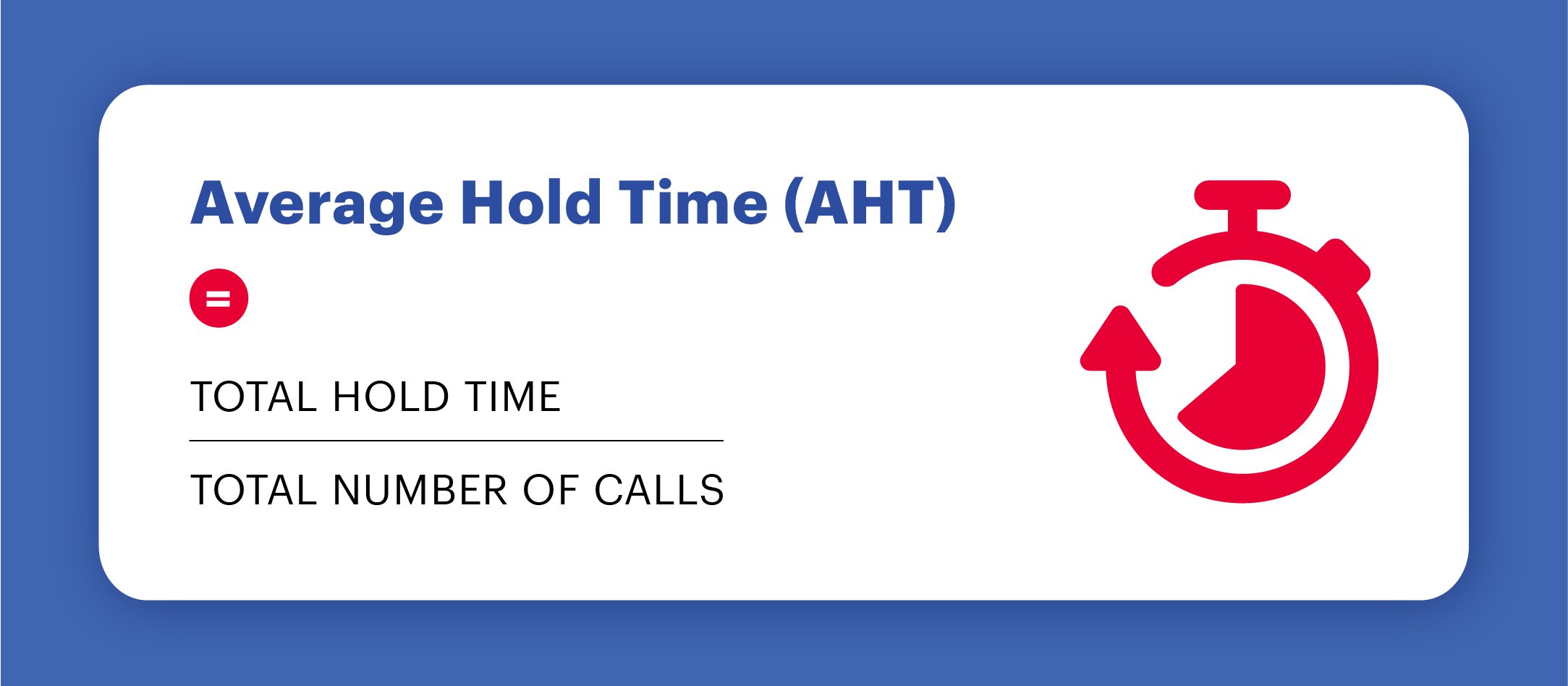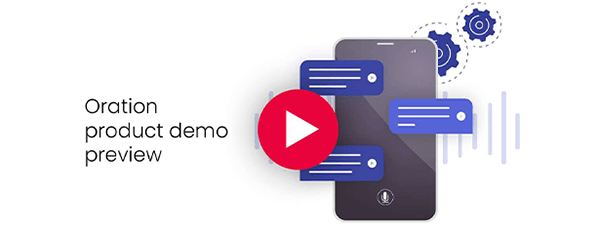How long are you willing to wait on hold for? Five minutes? 30 minutes? More than an hour? We are all familiar with the hold time ‘jingle’ that at some point we find ourselves humming along to. Not to mention the mini heart attack felt when the music stops, we anticipate a welcoming human voice, only to be met with ‘your call is important to us…’ and the tune starts again.
As a customer, at what point do we turn around and say ‘this isn’t good enough!’ and hang up? Your question remains unanswered and you’re left with a bad taste in your mouth towards the brand that has let down your customer service expectations. Ultimately, you’ve just had a bad customer experience (CX).
In this instance, you are just one customer. While one bad customer experience isn’t enough to completely ruin a brand’s image, how can you know that other customers aren’t experiencing the same? If your organisation started earning a reputation for lengthy customer hold times, that’s when alarm bells would ring and by then, the damage is done.
In this blog, we discuss how hold times affect your customer experiences and the ways in which you can optimise your contact centre operations to minimise caller frustrations.
Content Guide
What is the average hold time?
Average hold time (AHT) is a crucial metric in contact centre operations that reflects the duration a customer spends on hold before speaking to an agent. Long hold times can frustrate customers and harm your brand's reputation. In contrast, a low AHT indicates efficient service, enhancing customer satisfaction.
To optimise AHT, it's essential to analyse call patterns, implement robust training programs for agents and leverage advanced technologies like AI and automation. By doing so, you can ensure quick, effective responses, keeping your customers happy and loyal.
How long is an acceptable contact centre hold time?
An acceptable contact centre hold time varies depending on industry standards and customer expectations. Generally, customers expect hold times to be no longer than two to three minutes. Exceeding this duration can lead to frustration and a negative perception of your brand.
To maintain acceptable hold times, it's crucial to monitor call volume trends, ensure adequate staffing and continuously train your agents for efficiency. Implementing technology solutions like interactive voice response (IVR) systems and chatbots can also help manage high call volumes, reducing the pressure on human agents and keeping hold times within acceptable limits.
Remember, minimising hold time is not just about speed but also about maintaining the quality of service. Strive for a balance where your customers feel valued and heard, even if it means a slightly longer wait for a thorough resolution.
How to calculate average hold time
Calculating the average hold time (AHT) in a contact centre is essential for understanding and improving customer experience. The formula is straightforward:

To break it down:
- Total hold time: sum up all the time customers spend on hold during a specific period.
- Total number of calls: count the total number of calls handled in that same period.
Regularly monitoring and analysing AHT helps identify patterns and areas for improvement. By optimising staffing levels, enhancing agent training and leveraging technology, you can reduce AHT, leading to a more efficient contact centre and higher customer satisfaction.
Average hold time and its business significance
Average hold time (AHT) is more than just a metric; it's a vital indicator of your contact centre's efficiency and a key driver of customer satisfaction. Understanding its significance can help you enhance service quality and overall business performance.
Customer satisfaction
Long hold times can lead to frustrated customers, negatively impacting their experience and perception of your brand. On the other hand, shorter hold times typically result in happier customers, boosting loyalty and retention.
Operational efficiency
AHT provides insights into your contact centre's operational efficiency. High AHT may indicate issues such as insufficient staffing, inadequate training or inefficient processes. Addressing these can streamline operations and improve productivity.
Cost management
Reducing AHT can also lead to cost savings. Efficient call handling means your agents can manage more calls in less time, reducing the need for additional staff and minimising operational costs.
Competitive advantage
In a competitive market, superior customer service can set your business apart. Maintaining a low AHT shows that you value your customers' time, enhancing your reputation and giving you an edge over competitors.
By regularly monitoring and optimising AHT, you can ensure a balanced approach that keeps your customers satisfied, your operations smooth and your business thriving.
What factors cause long hold times?
Long hold times in a contact centre can be frustrating for customers and detrimental to business performance. Several factors can contribute to extended hold times:
- High call volume
Unexpected spikes in call volume can overwhelm your contact centre, leading to longer hold times. This can occur during peak hours, seasonal periods or in response to specific events or promotions.
- Insufficient staffing
A lack of adequately trained staff to handle incoming calls can result in longer wait times for customers. Ensuring optimal staffing levels and effective scheduling are crucial to managing hold times.
- Complex issues
Calls involving complex issues that require more time to resolve can increase overall hold times. Providing agents with comprehensive training and resources can help them handle such calls more efficiently.
- Inefficient call routing
Poor call routing practices, such as misdirecting calls to the wrong departments or agents, can cause delays. Implementing advanced call routing systems can help ensure that calls are directed to the right agent the first time.
- Technical issues
Technical glitches or system downtimes can disrupt call handling processes, leading to longer hold times. Regular maintenance and updates to your technology infrastructure can mitigate these issues.
- Insufficient training
Agents who are not adequately trained may take longer to address customer issues, contributing to increased hold times. Continuous training and development programs are essential for maintaining efficient service.
- Poor communication channels
Limited or ineffective communication channels can force customers to rely solely on phone support, increasing call volume and hold times. Offering alternative support options like live chat, email or self-service portals can alleviate pressure on phone lines.
Tips to reduce average hold times
These are the facts: the average person spends ten to 20 minutes per week on hold; 13 hours per year and around 43 days per lifetime1. With more than 80% of customers being put on hold every time they contact a business, if your organisation was to implement the following initiatives to lower hold times, your customer experience would be ahead of your competitors.
-
Review training and best practice procedures
After investing in best practice training for their customer service agents, 81% of organisations saw an increase in customer loyalty, revenue and cost savings2. Facilitating training opportunities for agents can also lead to improvements in employee retention, with 94% of employees stating they’d stay with a company that invested in learning opportunities for them3.
It’s important that your agents understand how to handle frustrated customers who may have been on hold for a long period, but ultimately just want their answer quickly and efficiently. Ensure they understand how to calmly address the customer’s pain point while keeping them abreast as to why the hold time is high and what is being done to minimise the remaining time it takes to get them the information they need. This can drastically improve brand reputation as while only 35% of customers share negative feedback online, 53% share positive comments instead4.
-
Update contact centre software
Just because you have great hold music, doesn’t mean customers won’t hang up. Abandoned call rates are another popular contact centre metric. The average abandonment rate is 5.91% across a variety of industries5. Essentially, the higher this percentage is for your organisation, the more customers you'll have that have left the phone feeling dissatisfied with their phone service and still in need of answers.
To fix abandoned call rates and ultimately reduce hold times, invest in contact centre software that can incorporate information from your CRM to help identify customer issues quicker. To do just that, the following are feature examples that you should look for in an ideal platform:
- Intelligent call routing: used to determine caller intent and ensure huge volumes of calls received by contact centres are quickly matched to the right outcome every time.
- Automated KYC verification: automatically asks and confirms identification questions without agent involvement.
- Voice biometrics: allow callers to be validated by simply stating identity numbers, adding an extra layer of security.
-
Improve self-service options
Harvard Business Review found that 81% of all customers will first attempt to source the answers to their questions themselves before reaching out over the phone6. 40% of these customers only called a contact centre when the self-service options failed them.
Self-service options can be anything from FAQs, a customer knowledge base, customer support articles, chatbots, virtual agents, web forms, or any digital service that allows customers the ability to find the answers they want on their own. By just implementing virtual customer assistants, organisations saw a 70% reduction in call, chat and/or email enquiries7.
-
Callbacks or virtual holds
50% of customers on virtual hold are willing to wait up to 20 minutes for a callback before considering the wait time as unacceptable8. What is a callback or virtual hold? It refers to the ability of a customer to ‘save their place’ in a call queue by receiving a call back from an agent when they are available. It removes the need to be placed on a traditional hold (staying on the phone, listening to hold time music) and instead is referred to as a virtual hold.
In order to incorporate this into your contact centre, investing in interactive voice response (IVR) systems is a great place to start. These platforms already have this function built into their service offering. A traditional IVR setup requires callers to select from fixed push button menus; ‘press 1 to be directed to sales, press 2 to be directed to customer service…’ and so on.
The ‘next-level’ approach, also known as customer experience platforms, can create call flows that lead to the best outcome using technology that accurately identifies caller intent from natural language responses. This means the platform can gather data from all over the contact centre and understand if the best practice would be to offer a caller a callback or virtual hold to minimise the chances of increasing hold times.
Want to reduce hold times? Why not start by reducing AHT?
Customers expect a seamless and positive experience when they interact with your business, even when you’re dealing with seasonal peaks or global economic fallouts. In this case study, you will learn how utilising artificial intelligence and complex call routing solutions helped a leading Australian retailer achieve a reduction of up to 30 seconds on their average call handling time.
References
1. Hold Up - More than 80 Percent of People are Put on Hold Every Time They Contact a Business
2. 2017 Global Customer Experience Benchmarking Key Findings Report
3. 2019 Workplace Learning Report
4. Customer lifetime value (CLV): What it is + how to calculate it
5. 2021 Talkdesk Global Contact Center KPI Benchmarking Infographic
6. Kick-Ass Customer Service Consumers want results—not sympathy
7. Gartner Says 25 Percent of Customer Service Operations Will Use Virtual Customer Assistants by 2020
8. The Science Behind How Long Customers Should Be On Hold







